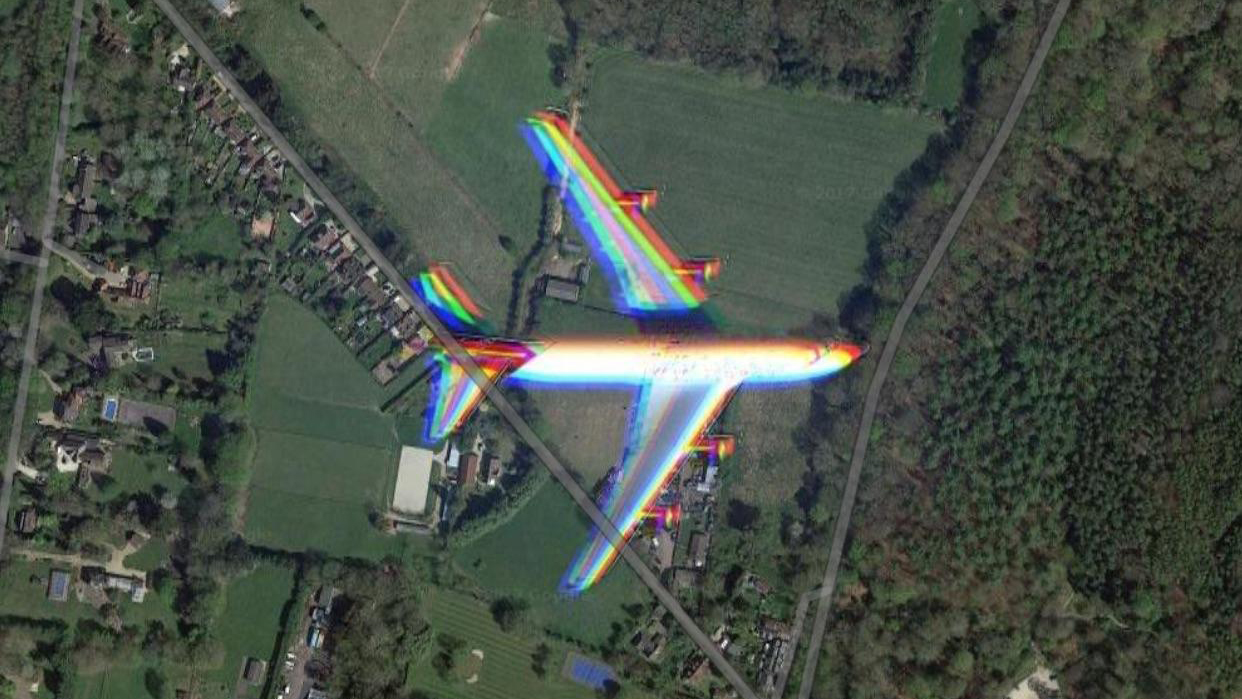History of Plane Crashes in Sao Paulo

Sao Paulo, Brazil’s bustling metropolis, has witnessed its share of aviation tragedies. Throughout its history, the city has experienced numerous plane crashes, leaving an indelible mark on the city’s aviation industry and the lives of its residents. This timeline explores some of the most significant plane crashes in Sao Paulo, examining their impact, contributing factors, and the lessons learned.
Notable Plane Crashes in Sao Paulo
The following list Artikels some of the most significant plane crashes in Sao Paulo, highlighting the date, location, number of casualties, and contributing factors.
- 1946: On August 16, 1946, a Panair do Brasil Douglas DC-4 crashed near Congonhas Airport, killing 23 people. The crash was attributed to pilot error, as the pilot attempted to land in poor weather conditions.
- 1973: On October 11, 1973, a Varig Boeing 737 crashed into a hill near Congonhas Airport, killing 132 people. The crash was caused by a combination of factors, including pilot error, mechanical failure, and weather conditions.
- 1982: On September 17, 1982, a Varig Boeing 737 crashed into a residential area near Congonhas Airport, killing 137 people. The crash was attributed to pilot error, as the pilot attempted to land in heavy rain and fog.
- 1996: On January 31, 1996, a TAM Airlines Fokker 100 crashed into a hangar at Congonhas Airport, killing 99 people. The crash was caused by pilot error, as the pilot attempted to land in strong winds.
- 2007: On September 17, 2007, a TAM Airlines Airbus A320 crashed into a hangar at Congonhas Airport, killing 199 people. The crash was caused by pilot error, as the pilot attempted to land in heavy rain and fog.
Impact of Plane Crashes on Sao Paulo, Plane crash sao paulo
These crashes have had a profound impact on Sao Paulo, both on the city’s aviation industry and on its residents. The crashes have led to increased safety regulations, improved training for pilots, and the development of new technologies to prevent accidents. They have also caused widespread grief and trauma, leaving families and communities struggling to cope with the loss of loved ones.
Contributing Factors to Plane Crashes in Sao Paulo
A variety of factors have contributed to plane crashes in Sao Paulo, including:
- Pilot Error: Many crashes have been attributed to pilot error, such as attempting to land in poor weather conditions or failing to follow proper procedures.
- Mechanical Failure: Some crashes have been caused by mechanical failure, such as engine failure or malfunctioning instruments.
- Weather Conditions: Sao Paulo’s climate can be challenging for pilots, with frequent heavy rain, fog, and thunderstorms.
- Airport Infrastructure: The city’s airports have been criticized for their lack of modern infrastructure, which has contributed to accidents.
Notable Plane Crashes in Sao Paulo: Plane Crash Sao Paulo

Sao Paulo, being a major hub for both domestic and international flights, has unfortunately witnessed its share of aviation tragedies. These events have left a lasting impact on the city and its residents, prompting investigations and safety measures to prevent similar occurrences in the future.
Significant Plane Crashes in Sao Paulo
These are some of the most significant plane crashes that have occurred in Sao Paulo, highlighting the impact they had on the city and its people.
TAM Airlines Flight 3054
- Date: July 17, 2007
- Location: Congonhas Airport, Sao Paulo
- Cause: The aircraft, an Airbus A320, overran the runway during landing in heavy rain, resulting in a collision with a fuel truck and a subsequent fire.
- Casualties: 199 people, including all 187 passengers and 12 crew members.
This tragic incident is considered the deadliest plane crash in Brazilian history. It led to widespread mourning and a reassessment of safety procedures at Congonhas Airport, including the installation of a new runway safety area.
VASP Flight 168
- Date: September 3, 1973
- Location: Congonhas Airport, Sao Paulo
- Cause: The aircraft, a Boeing 737, was attempting to land in heavy fog when it crashed into a residential area near the airport.
- Casualties: 16 people, including 9 passengers and 7 crew members.
The crash, which also resulted in the deaths of several people on the ground, prompted investigations into the airport’s safety procedures and the use of advanced landing systems during poor weather conditions.
Aerolineas Argentinas Flight 644
- Date: August 10, 1999
- Location: Guarulhos International Airport, Sao Paulo
- Cause: The aircraft, a Boeing 737, was attempting to land during a heavy thunderstorm when it crashed into a field near the airport.
- Casualties: 70 people, including all 69 passengers and 1 crew member.
This accident highlighted the dangers of flying in severe weather conditions and led to renewed focus on the importance of weather forecasting and pilot training in managing challenging weather situations.
Gol Transportes Aéreos Flight 1907
- Date: September 29, 2006
- Location: Near the city of Macapá, Amapá, Brazil
- Cause: The aircraft, a Boeing 737, collided in mid-air with a Legacy 600 business jet, resulting in the crash of the Gol flight.
- Casualties: 154 people, including all 154 passengers and crew members.
This tragic accident led to a major investigation into the role of air traffic control and the need for improved collision avoidance systems. It also highlighted the importance of maintaining awareness of surrounding aircraft and following proper procedures to avoid mid-air collisions.
Table of Notable Plane Crashes in Sao Paulo
| Date | Location | Cause | Casualties |
|---|---|---|---|
| July 17, 2007 | Congonhas Airport, Sao Paulo | Runway overrun during landing in heavy rain, collision with fuel truck and fire | 199 |
| September 3, 1973 | Congonhas Airport, Sao Paulo | Crash into a residential area during landing in heavy fog | 16 |
| August 10, 1999 | Guarulhos International Airport, Sao Paulo | Crash into a field during landing in a heavy thunderstorm | 70 |
| September 29, 2006 | Near the city of Macapá, Amapá, Brazil | Mid-air collision with a Legacy 600 business jet | 154 |
Safety Measures and Aviation Regulations in Sao Paulo

Sao Paulo, being a bustling metropolis with a significant volume of air traffic, has implemented robust safety measures and aviation regulations to mitigate the risk of plane crashes. These measures encompass various aspects, from rigorous airport security and advanced air traffic control systems to stringent pilot training and aircraft maintenance protocols.
Safety Measures at Airports
The safety of passengers and crew is paramount at Sao Paulo’s airports. Here are some of the key measures in place:
- Enhanced Security Screening: Passengers and their belongings undergo comprehensive security checks, including baggage screening and metal detectors, to prevent unauthorized items from entering the airport. This is crucial for preventing potential threats to aircraft safety.
- Emergency Response Systems: Airports are equipped with well-defined emergency response plans and sophisticated equipment, such as fire trucks, ambulances, and rescue teams, to handle any incidents swiftly and effectively. Regular drills are conducted to ensure the readiness of emergency personnel.
- Runway and Taxiway Maintenance: Regular inspections and maintenance of runways, taxiways, and other airport infrastructure are crucial for ensuring their integrity and preventing accidents caused by surface irregularities or obstructions. These measures include inspections for cracks, debris, and other potential hazards.
Role of Aviation Regulations
Aviation regulations play a critical role in ensuring safety in the airspace over Sao Paulo. These regulations cover a wide range of aspects, including:
- Pilot Licensing and Training: Stringent requirements for pilot licensing and ongoing training ensure that pilots possess the necessary skills and knowledge to operate aircraft safely. This includes rigorous flight simulation training and recurrent training to maintain proficiency.
- Aircraft Maintenance and Inspections: Regular inspections and maintenance of aircraft are mandatory to ensure their airworthiness. This includes scheduled maintenance checks, inspections for potential defects, and adherence to safety standards set by aviation authorities.
- Air Traffic Control: Advanced air traffic control systems are used to manage air traffic efficiently and prevent collisions. Air traffic controllers monitor aircraft movements, provide guidance to pilots, and ensure safe separation between aircraft.
Comparison with Global Standards
Sao Paulo’s aviation safety standards are comparable to those of other major cities worldwide. The country’s national aviation authority, ANAC (Agência Nacional de Aviação Civil), adheres to international standards set by organizations like the International Civil Aviation Organization (ICAO). This ensures that safety protocols are aligned with global best practices.
Plane crash sao paulo – The plane crash in São Paulo was a tragic event, reminding us of the fragility of life. While the world mourns the loss, the political stage continues to churn. The next presidential debate is crucial, and it’s natural to wonder who is moderating the next presidential debate.
This debate will likely be a platform for discussing crucial issues, just as the plane crash has sparked conversations about safety and responsibility in the air travel industry.
The plane crash in São Paulo, a tragic event that shook the nation, reminds us of the fragility of life. As we mourn the loss, we are also drawn to the political arena, wondering what time is the presidential debate.
The debate, a crucial moment in shaping the future of the country, serves as a stark contrast to the somber reality of the crash. Amidst the grief and uncertainty, the search for answers and accountability continues, a stark reminder of the delicate balance between tragedy and hope.
